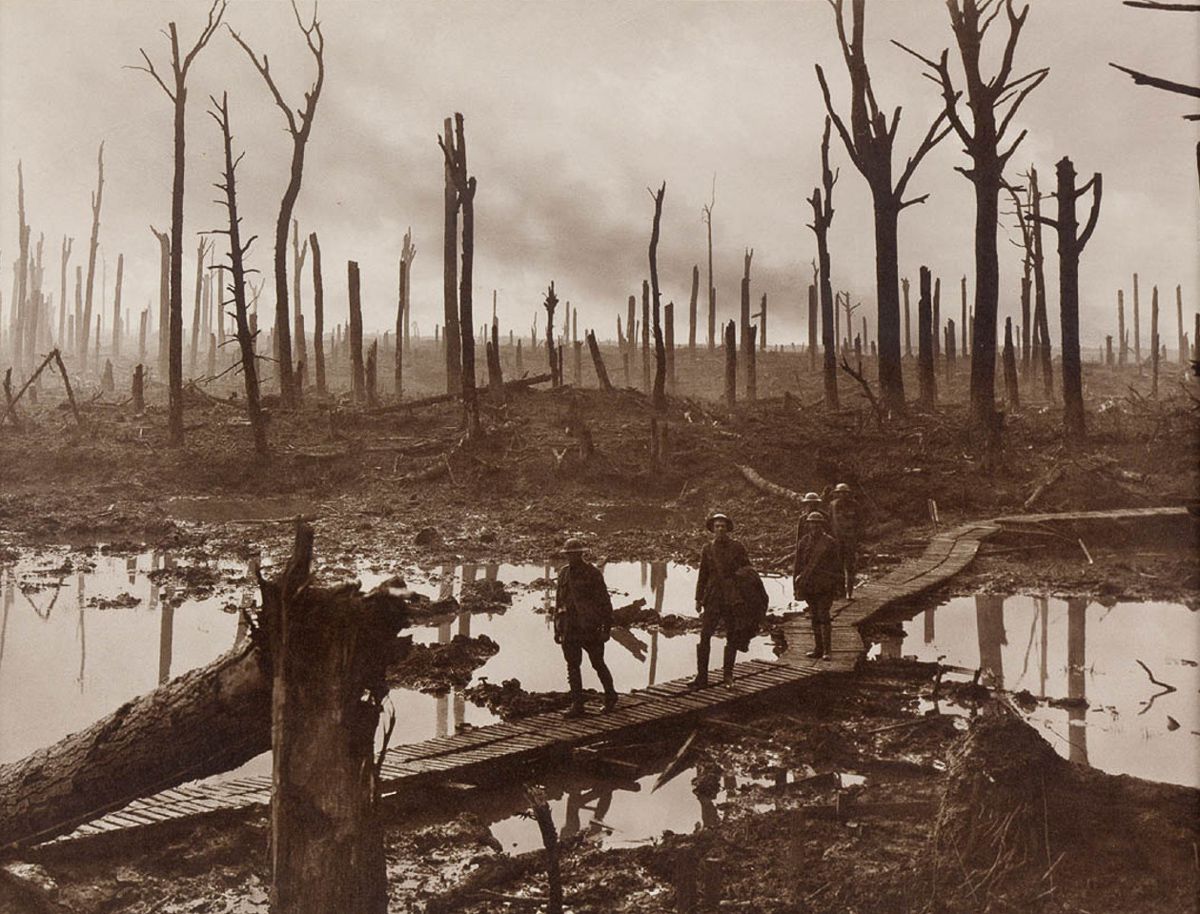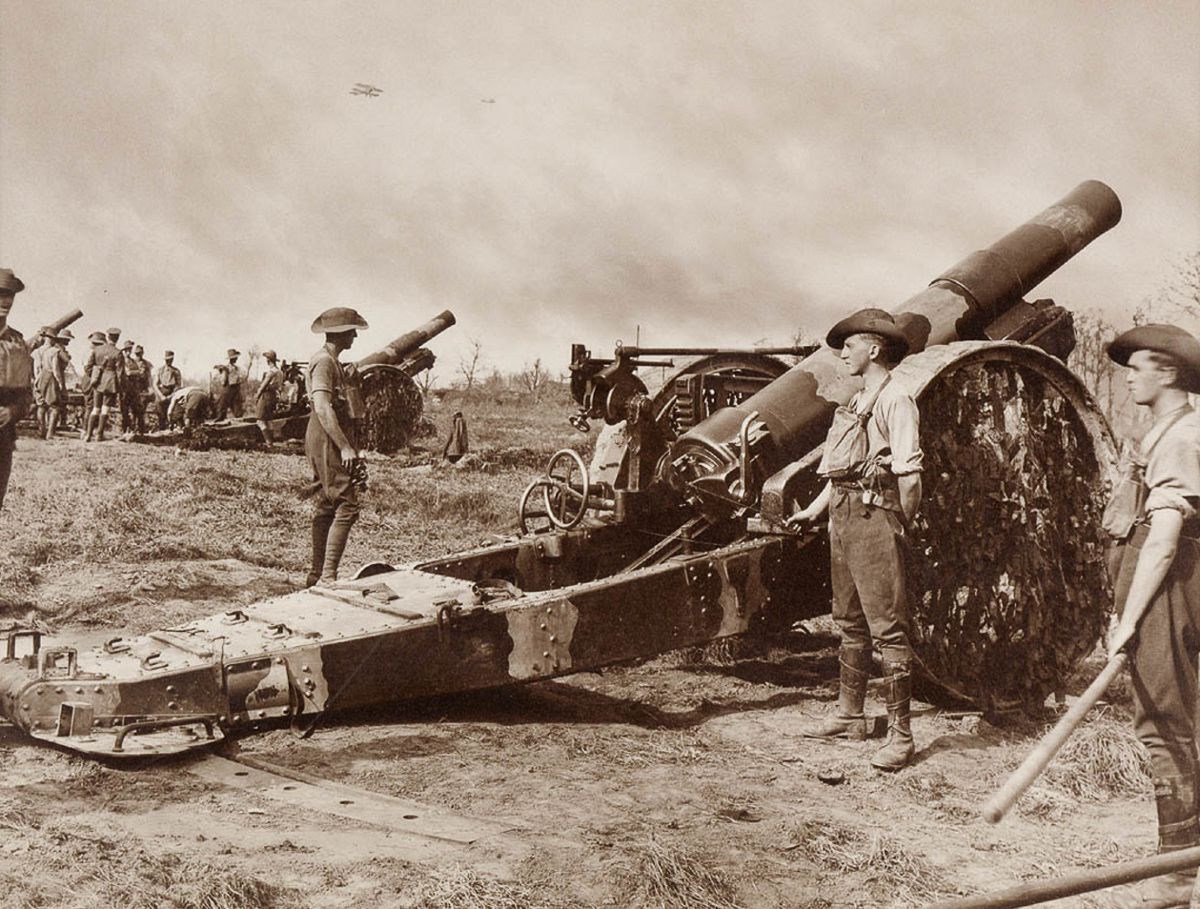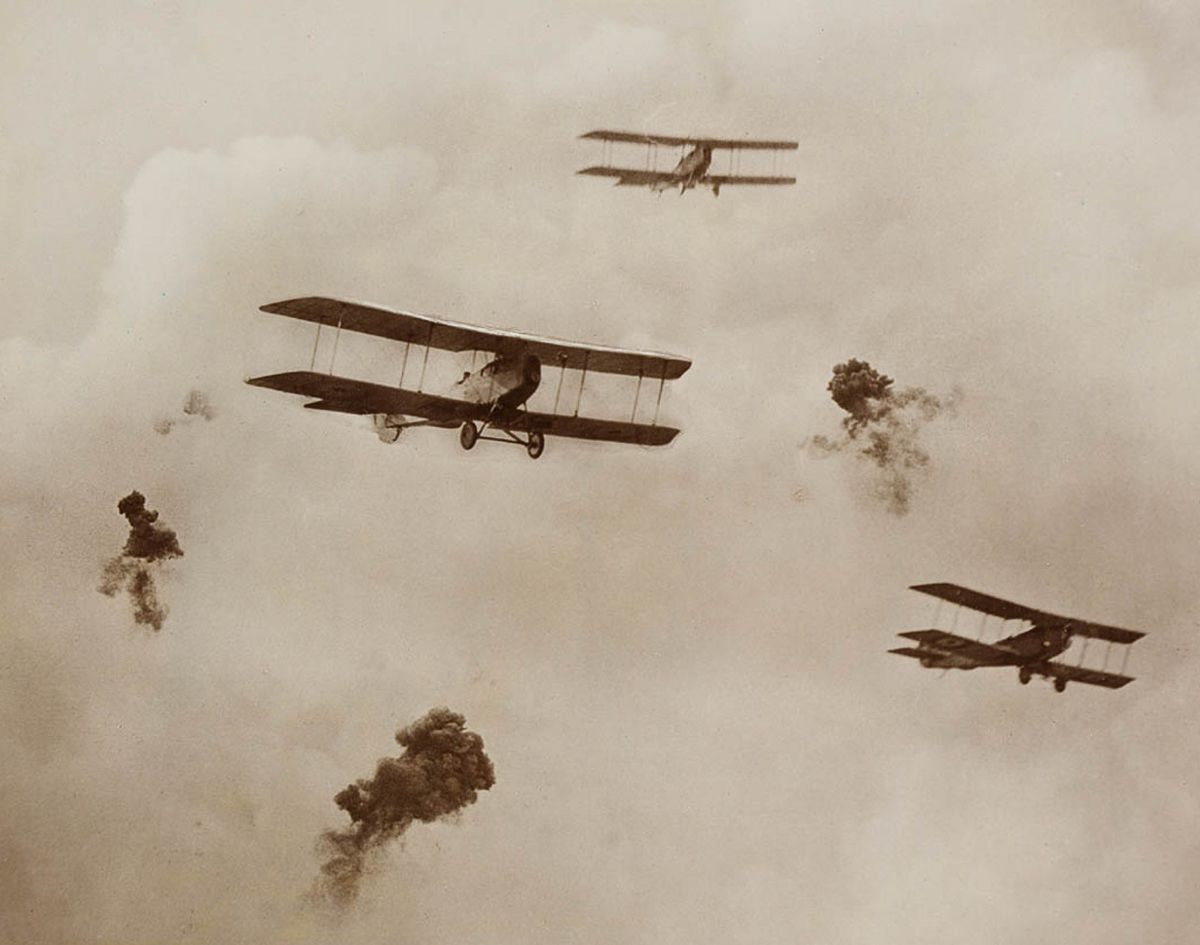“Our resources are illimitable & there appears to be sufficient shells around to pave a way to Berlin. I wonder how many of these brave fellows will live to be photographed”
– Frank Hurley, WW1
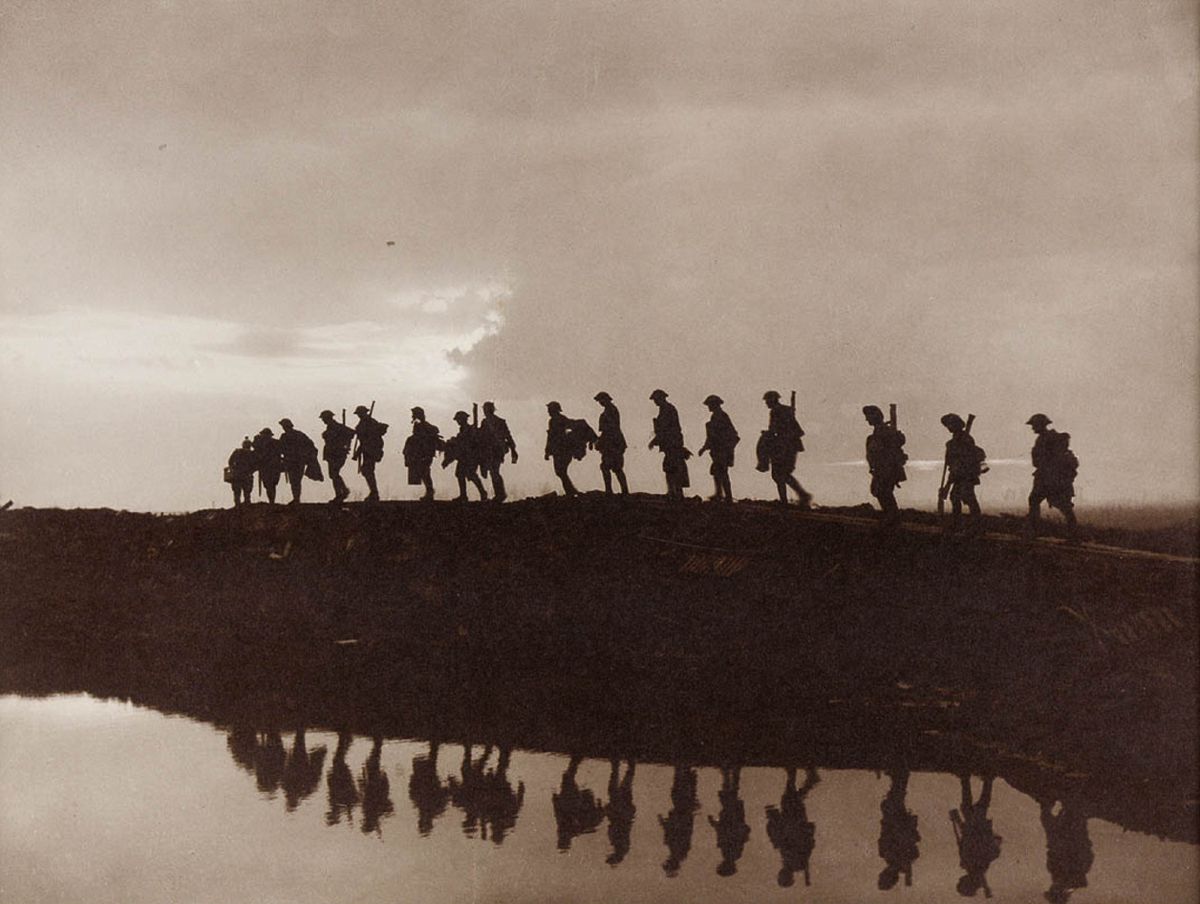
Six years on from taking a trip to Antarctica, Frank Hurley (15 October 1885 – 16 January 1962) was in France, working as a photographer for the Australian Imperial Force.
His work was not without its controversies. Some of his pictures from WW1’s Western Front are composite images – a practice that was especially popular among professional photographers at the time. He used it in the hope that he could portray the disgust and horror that he felt during the war in such a way that his audience would feel it too. Are they fakes, truth or art? is photojournalism ever benign, incapable of not being shaped by the journalist’s prejudices and ideas?
In his story Difficult Loves, Italo Calvino (October 15, 1923–September 19, 1985) talks of what the photograph means, and why some are considered more worthy than others;
The minute you start saying something, “Ah, how beautiful! We must photograph it!” you are already close to the view of the person who thinks that everything that is not photographed is lost, as if it had never existed, and that therefore, in order really to live, you must photograph as much as you can, and to photograph as much as you can you must either live in the most photographable way possible, or else consider photographable every moment of your life. The first course leads to stupidity; the second to madness.
…
Photographed reality immediately takes on a nostalgic character… a commemorative quality, even if the picture was taken the day before yesterday. And the life that you live in order to photograph it is already, at the outset, a commemoration of itself.
Hurley is an artist, then, reflecting the essence of what he sees and feels being there, not simply the look, and moving his work away from mere propaganda.
He kept a diary from 1917 to 1918, chronicling his time as a war photographer. In it, he said his mission was “to illustrate to the public the things our fellows do and how war is conducted”. Extracts from that diary are included below.
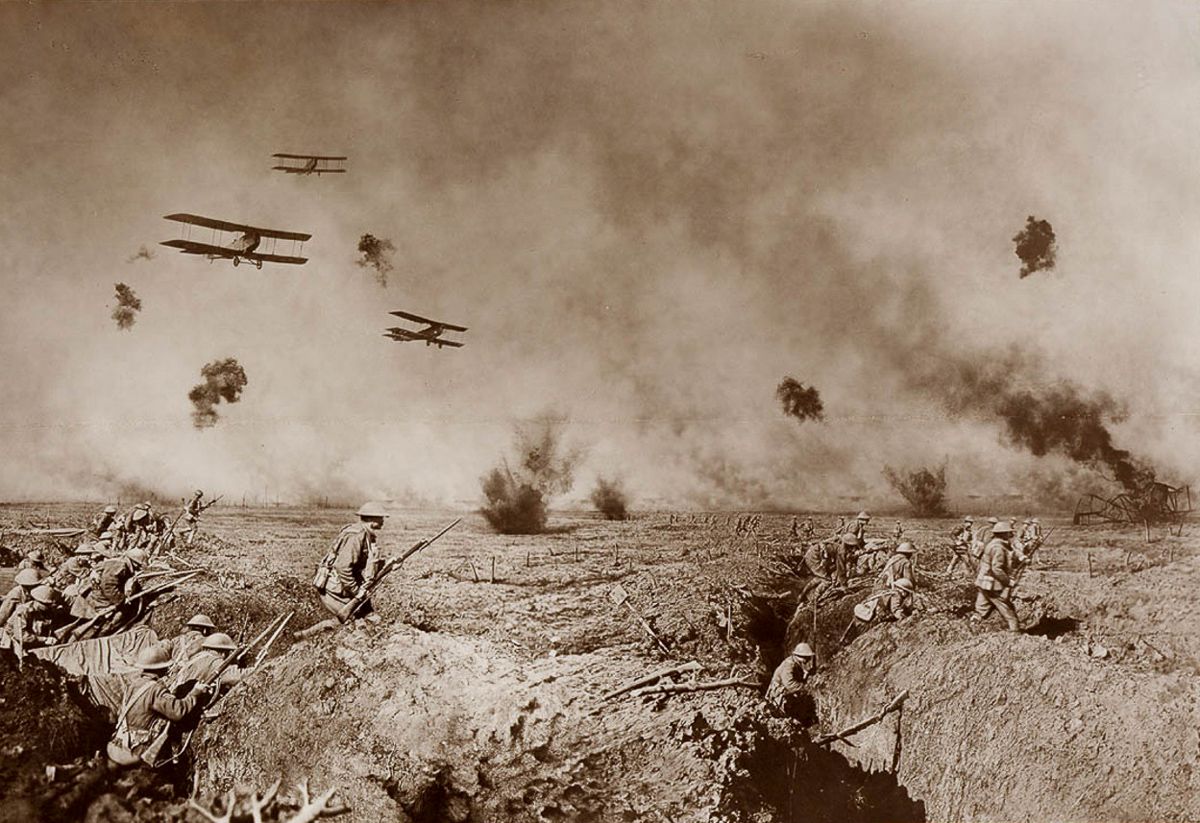
An episode after the Battle of Zonnebeke.
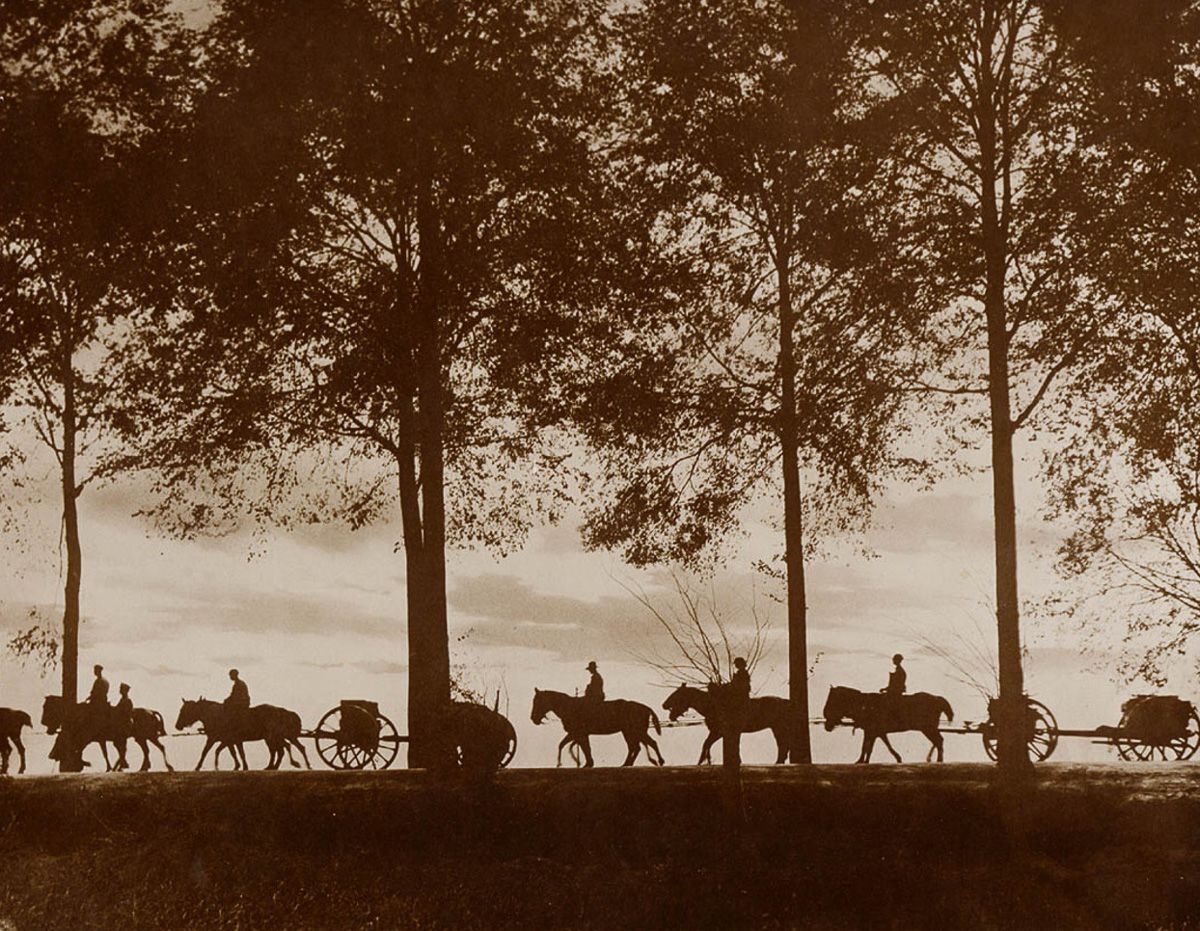
21st August, 1917
The day has at last arrived & I have left London. After an early morning’s packing & visiting Administration offices, I caught the Staff train from Charing Cross at 12.50 PM. Never had I dreamt there were so many Generals, Colonels & Majors engaged on staff work. The train was packed with them. I had a delightful conversation with two Colonels, muchly travelled men, who occupied the same compartment as myself. A couple hours brought us to Folkestone, where the Princess Victoria, laden with returning troops & the Staff Steamer were waiting. The large amount of equipage carried by myself, gave me an anxious time keeping it from getting mixed with the ponderous amount of baggage dumped promiscuously
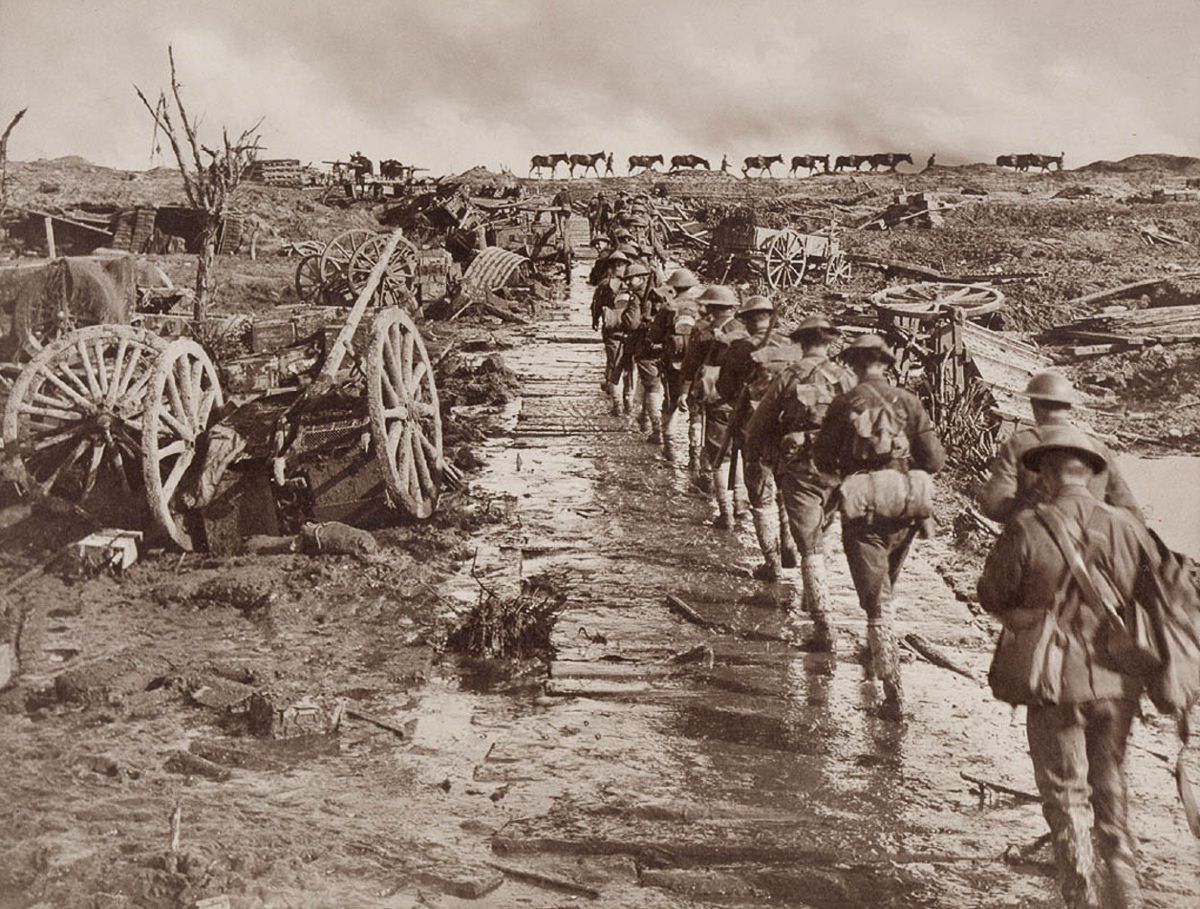
23rd August
The village of Voormezeele is a mass of ruins & stumps of houses and here the luxuriance of vegetation ceases & the shell-swept battlefield properly begins. Trees, villages & even contours of the landscape have been..
Putting on our shrapnel helmets & carrying our gas masks we walked across this desert, whose outskirts are already becoming green with grass, past myriad sandbagged dugouts to Lock 7, once an old canal, but now just a swampy depression. Here the awfulness of the battlefield burst on one. The great howitzer & batteries were in full operation & the ear-splitting din was followed by the scream of a hail of shell which swept over our heads to the enemy lines.
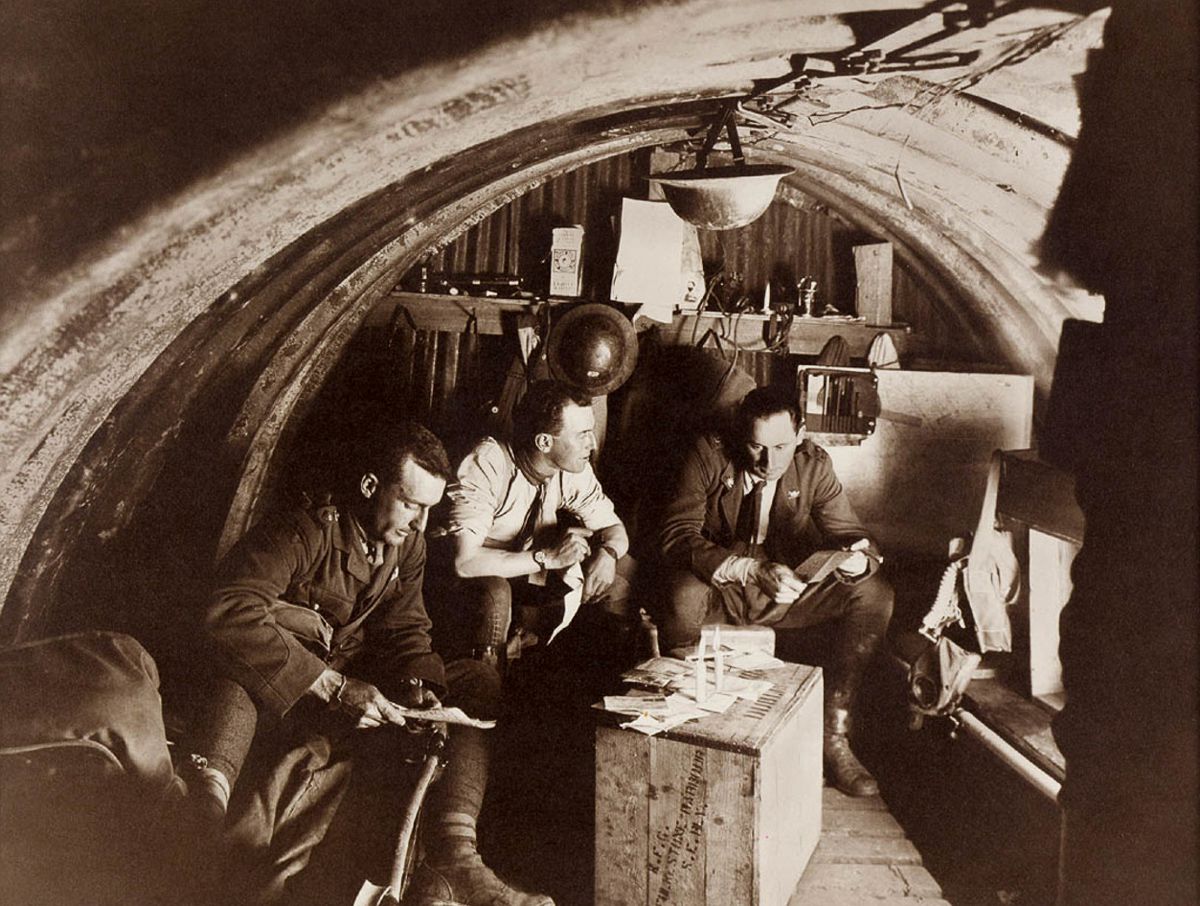
In an elephant iron dugout on Hill 60
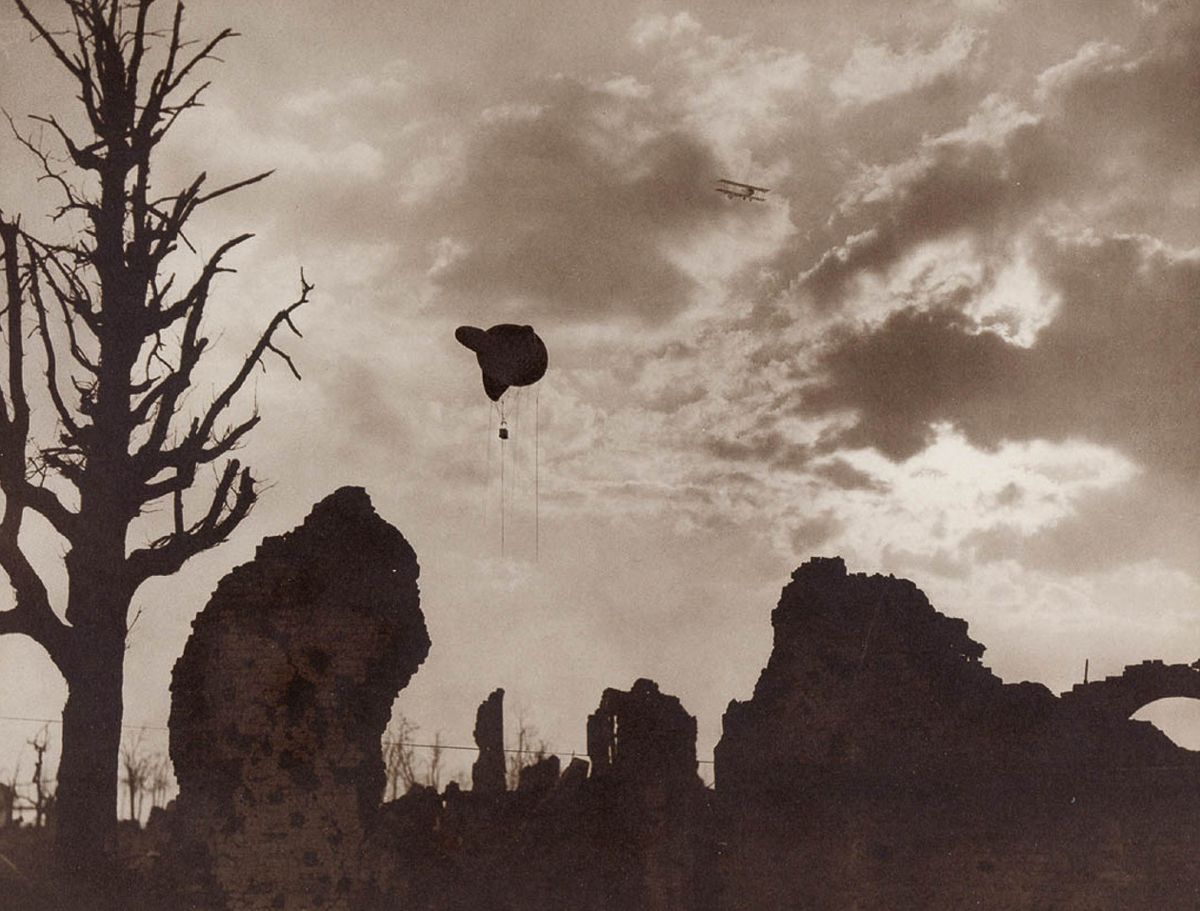
An observation balloon over the ruins of Ypres
26th August Sunday
From Voormezelle there is absolutely no cover: all vegetation & villages being absolutely swept away by the fire which has continued over it for over two years. It is about two miles up to hill 60, a miserable, desolate, shelled waste, over which shells scream & the heavy artillery, with the roar of a thousand thunders, belches them forth in an endless stream. The bursting of bosh shells in one’s immediate vicinity added to the excitement of the Tramp, but rather detracted from one’s admiration of the surrounding desolation. We were highly gratified on reaching Col. Shelshire’s dugout in safety, & more so to deposit our loads, which had grown to a prodigious weight. During the afternoon Blake & I strolled out to an advanced position in front of hill 60 , over the recently won ground. What a devilish sight it was. Everything to the horizon has been shot away.
Took picture interior dressing station on Hill 60. This has been excavated in the famous tunnel excavated by the 1st Aust Tunnelling Coy. for the mining of hill 60.
Also photographed the interior of the Elephant Iron dugout of the o/c Major Morris of the 105th Howitzer battery. Blake on left, Ikin centre & Major Morris right.
Blake was member of the Mawson Xpdtn went right through the war with the artillery & was killed the morning the Armistice was signed.
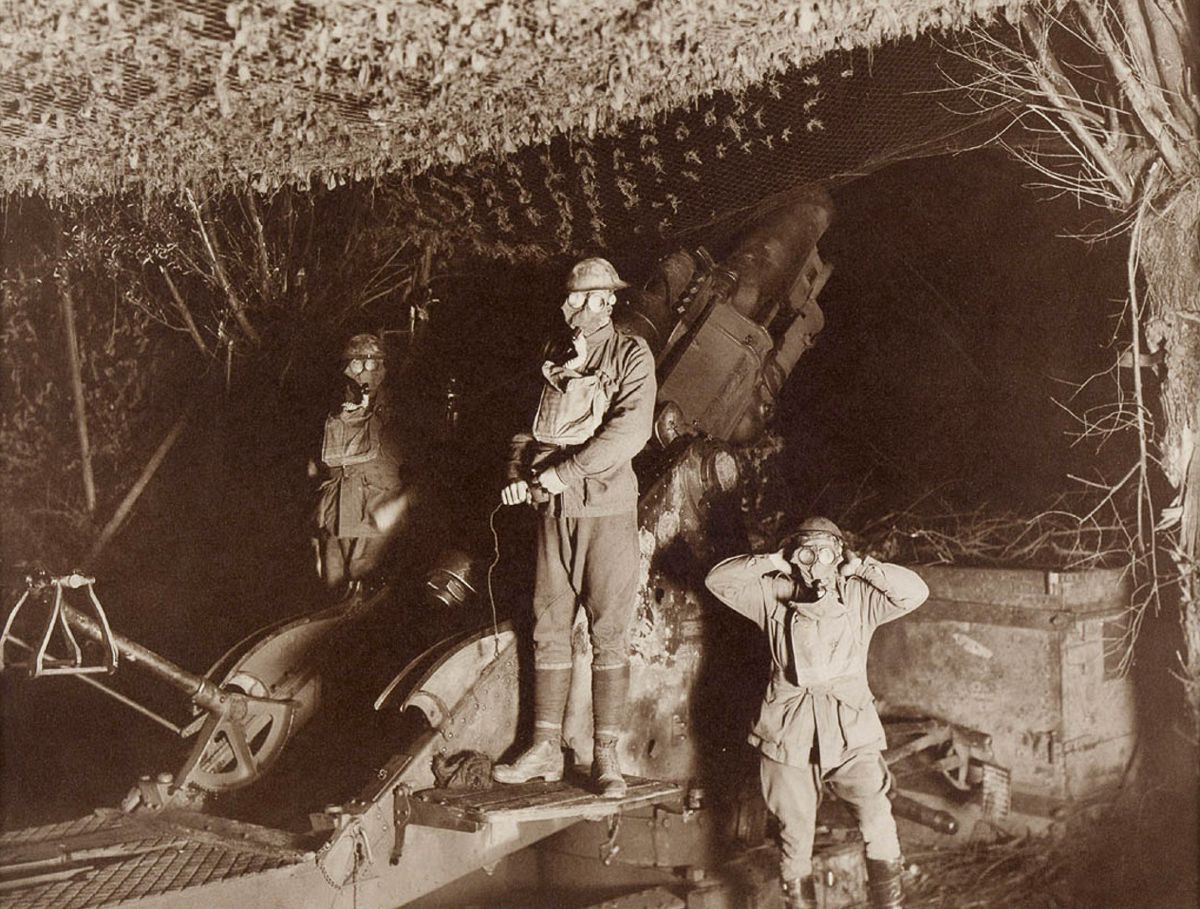

31st August Friday
Last night the periodic roaring of the Artillery kept me awake – until the small hours when it died away.
Moving to Steenvorde. At last my Hut is finished & I have christened it the Billabong. It could have been easily erected in 4 days. But it took ten men three days & 6 men another seven. Oh! it’s shameful the way both money & men are wasted here. Far better they had been at home on the land than idling their time away here through mismanagement.
Afternoon went again to the pack transport & took more photographs, then to Steenvorde which is now my home. Did much developing and satisfied with the results. The light here is extremely slow, as there is very little sunshine just now. To bed at 12.30 A.m. Extremely busy getting things in order.
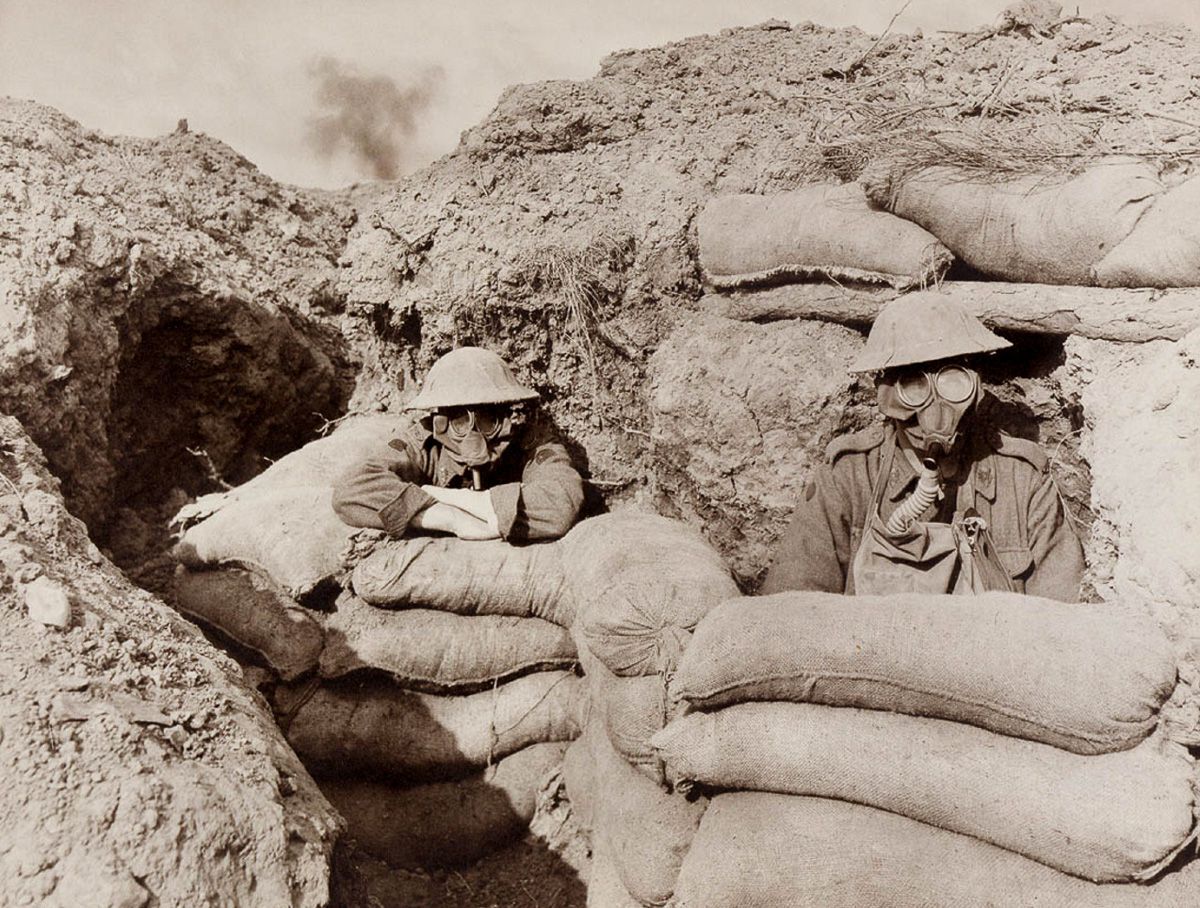
During a gas attack. Funk holes in the trenches
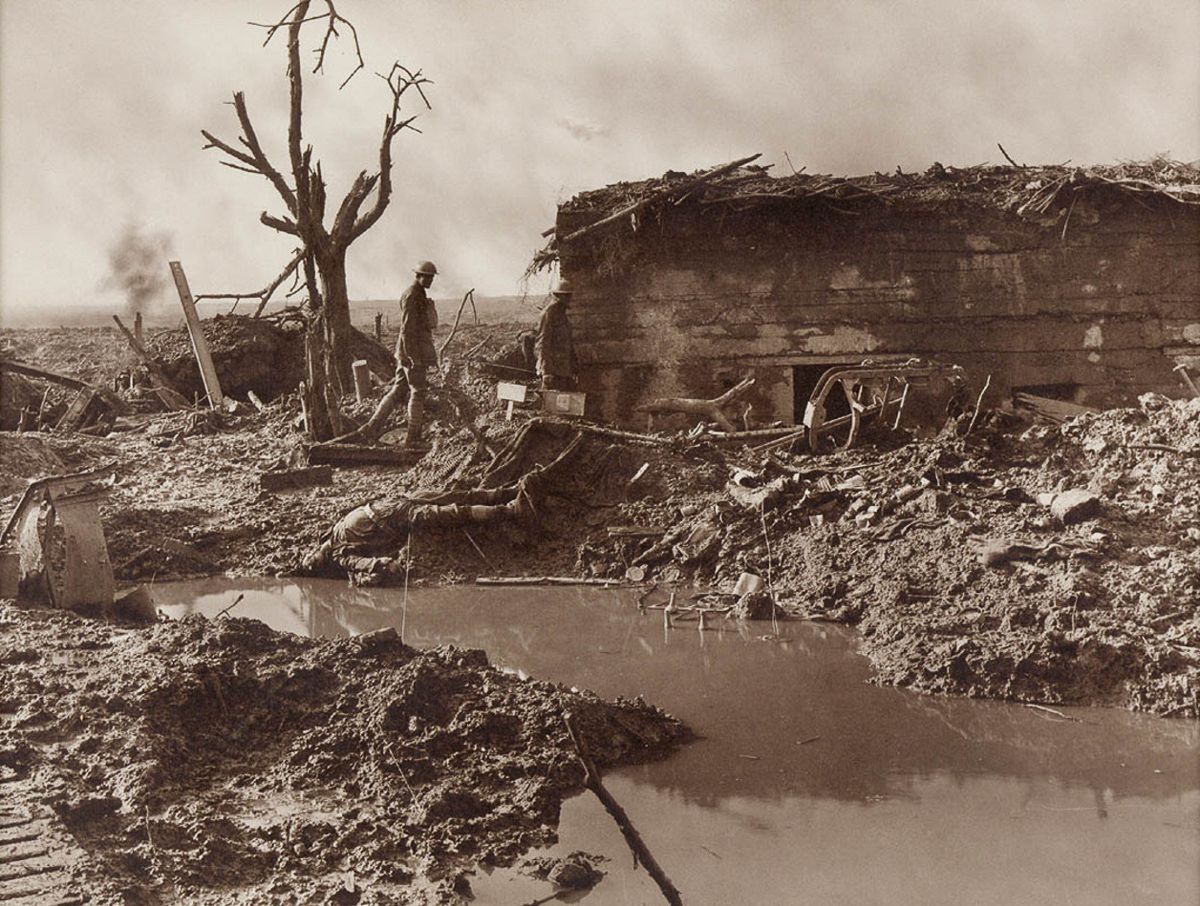
A Hun Pill-box amid surroundings characteristic of the Ypres salient

Death the Reaper. (Multiple negative composite)
1st September Saturday. Sleeping
My new Quarters lay about ¾ mile from the picturesque little village of Steenvorde, directly adjacent to the water tower which supplies the town. The construction is of curved iron – known as the mission Hut. A type which is housing many of the staff and administration officers. The length is 25 ft x 15 ft & comprises a dark room, Two living rooms & a workroom… The room is lined with matchboard and is as comfortable a little bungalow as I could wish for…
The rations issued are 1 ¼ lb. bread 14 ozs Meat, Jam, cheese, tinned milk, tea, sugar, Bacon. We pool together 6d each, I pay for the car driver, who is on British army pay, & with the 3/- a day buy eggs & dainties. We live like fighting cocks, good & plenty. One requires here but plain food for hunger is after all the best sauce.
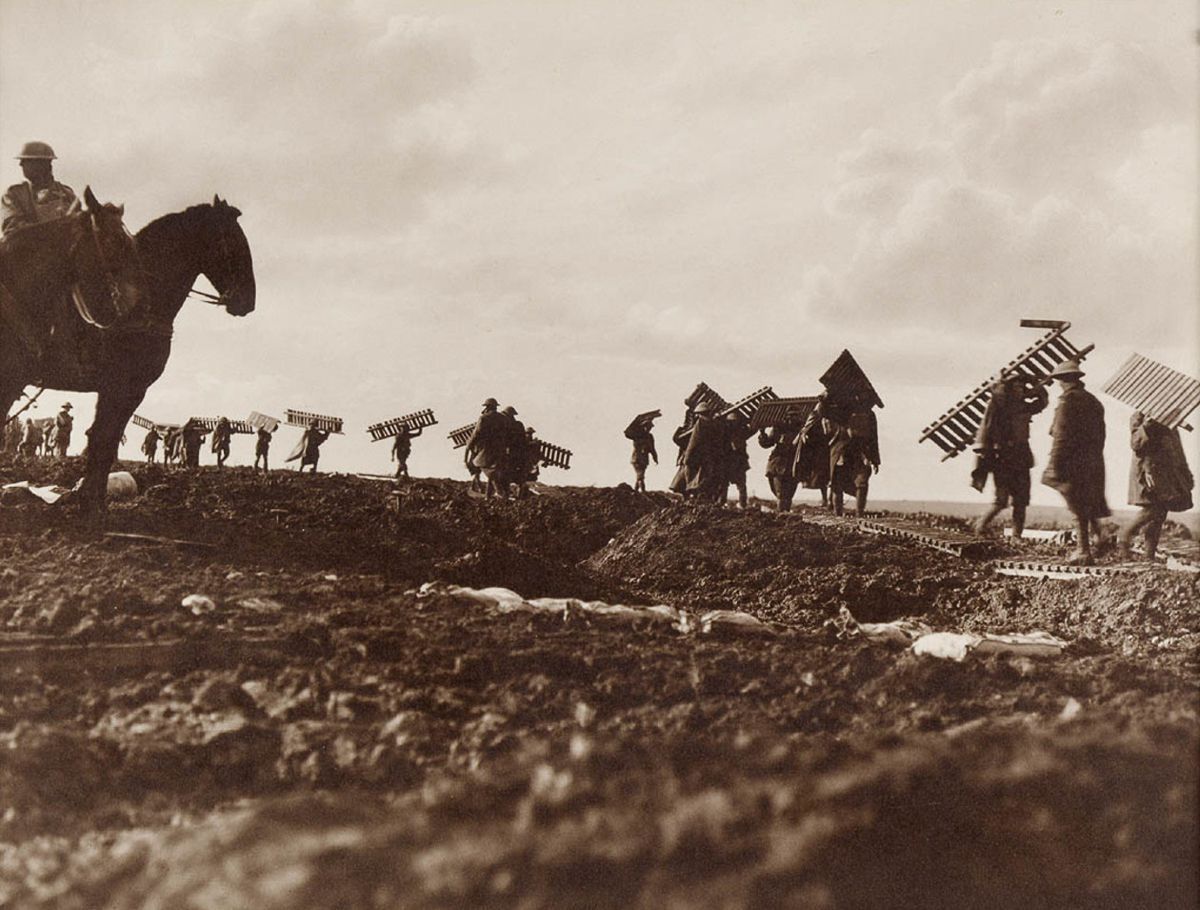
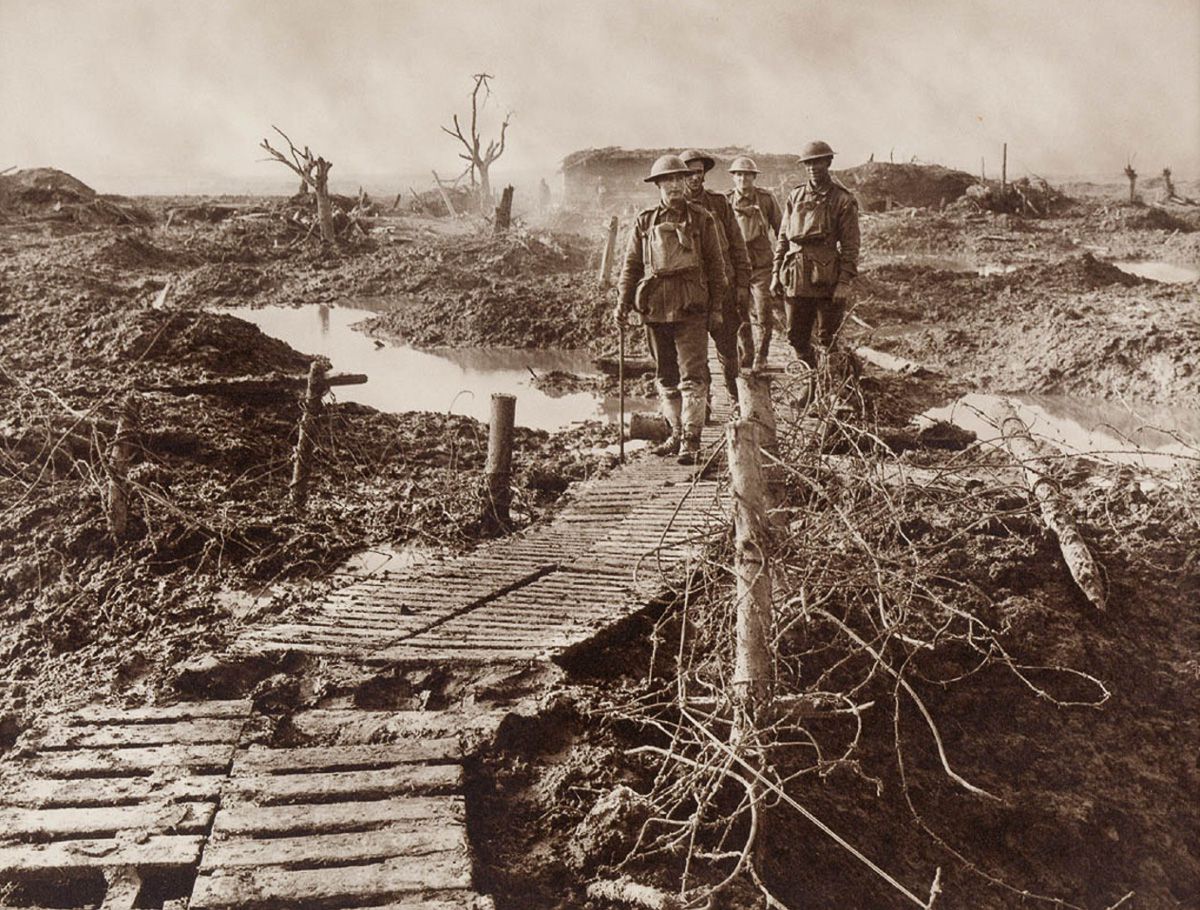
5th September
Last night, Bosh Aeroplanes again kept up their infamous reputation, by bombing Steenvorde again. Our 1st Anzac Headquarters have been removed to Hoograaf so as to be nearer operations. Our Infantry & artillery are active & it looks as though they will be going into action in a few day’s time. They have been resting for several months recuperating, & as always happens, when there is any objective which other troops cannot take, the Australians are sent in to do it. I must say that although our fellows have the reputation of being unkempt and undisciplined, they always achieve their object, have the dash & resource & are unsurpassed.
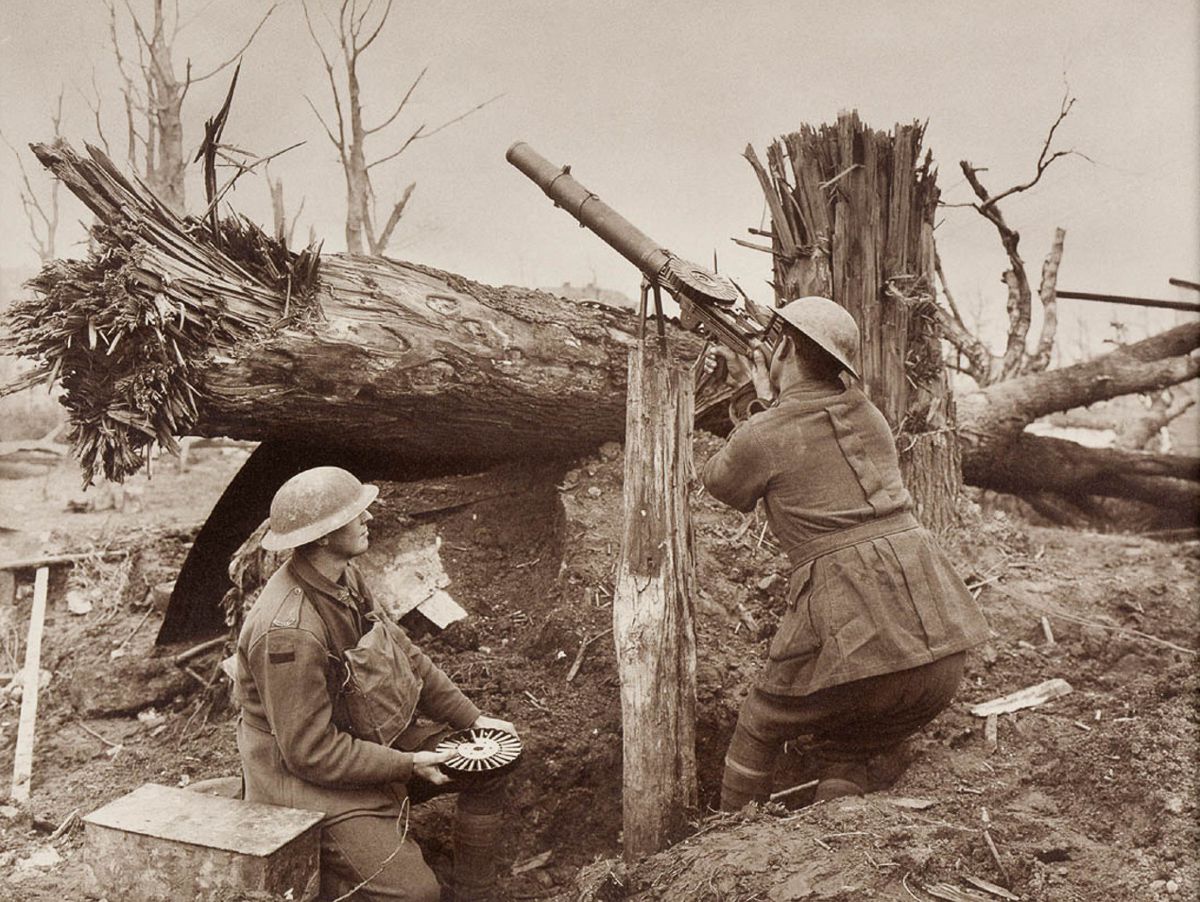
Sniping enemy planes with a Lewis gun
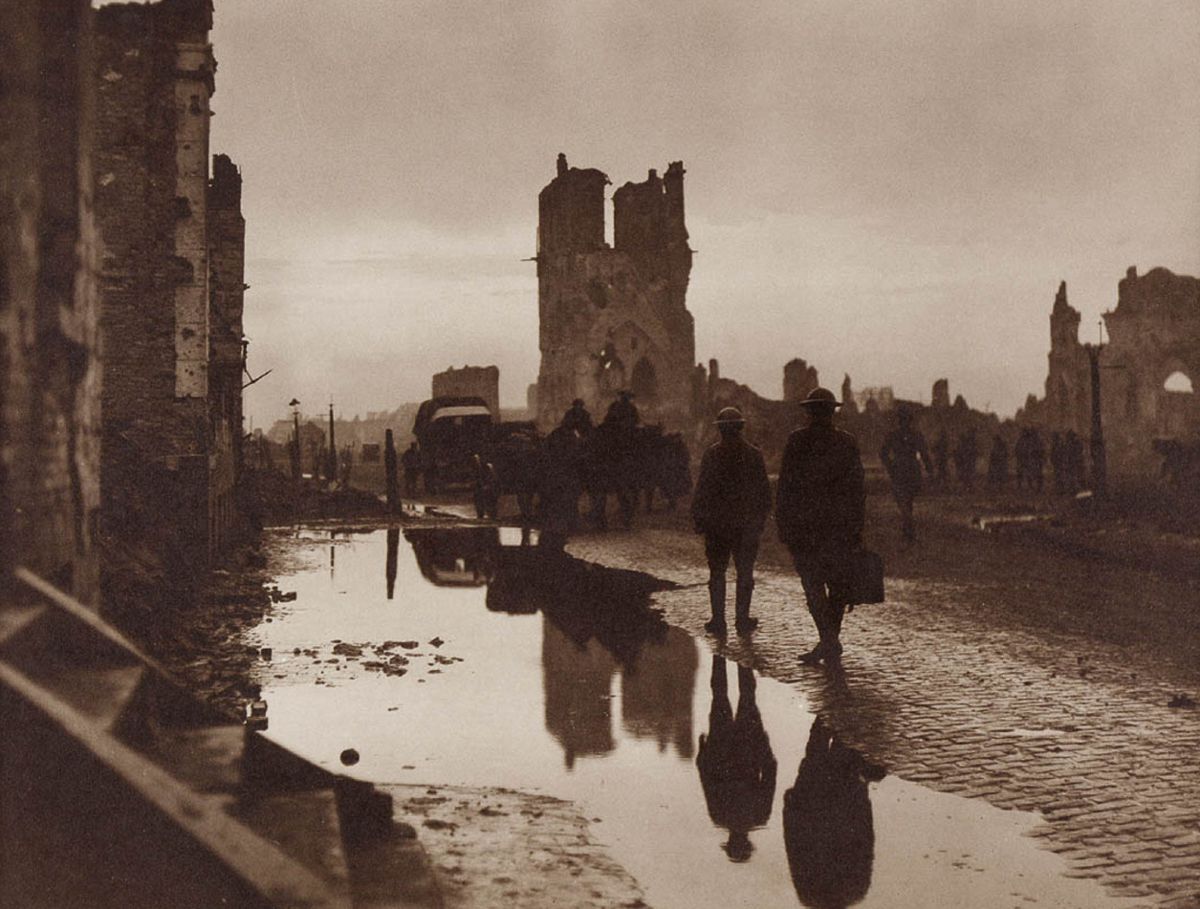
Evening by the Cloth Hall, Ypres

Infantry marching through Ypres
7th September
I visited the Australian Mining & Boring Corps this morning & lunched with Capt Hunter. I secured from him a mine exploder & Electric Cable. Afterwards to Renescue & made arrangements to take pictures of the 2nd division tomorrow at Routine drill. Thence by way of Cassel, through the beautiful tree groves to Camp. We then went to Hoograaf where are our headquarters. On the way, we passed the engineers of which my dear friend Major Webb is O.C.
Also immense columns of transports & artillery trains drawn by caterpillar tractors. It is appalling the fiendish amount of money that is wasted on this hellish business of killing each other. These great masses of iron & steel, just to throw explosive missiles to destroy one another, block the roads in an endless train. What deplorable waste of men & material. Our tremendous surplus of guns, munitions & men appear to assist us to no great extent, & if there is difficulty in the transport just now, what will it be in the coming wet season?
9th September Sunday.
Went to Reminghilst to the 54th Australian siege battery. The batteries & infantry are all now concentrating around the Ypres, Messines sector & will be in action in a few days time. The battery are 8in siege Howitzers, six in number & are hauled by caterpillar tractors. They will be placed in position at Lock 8 near Vormizelle & about 5,000 yds from the Bosh lines. Whilst l was inspecting the battery, a number of Bosh Aeroplanes came over flying at about 7,000 feet. Our anti-aircraft opened on them & they and became the centre of little white puffs of bursting Shrapnel – familiarly called “Archies”. They made off successfully & dropped a number of bombs killing a number of horses. The Bosh machines are superior to ours in speed & climbing capabilities. A few shells passed over the battery fired by the Bosh at long range.
It was amusing to notice all the men immediately stop work & lustily cheer.

Evening in the ruined city of Ypres
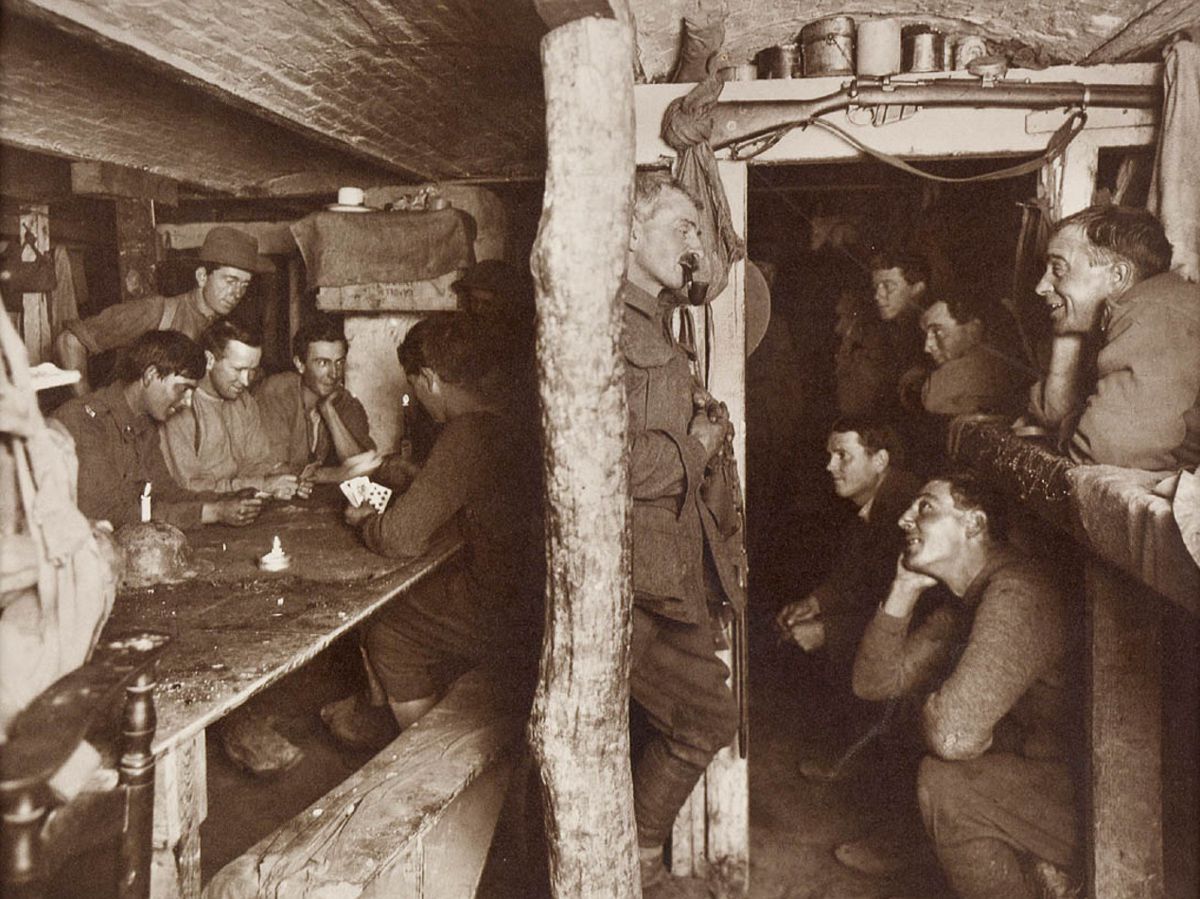
A refuge in the cellars of Ypres
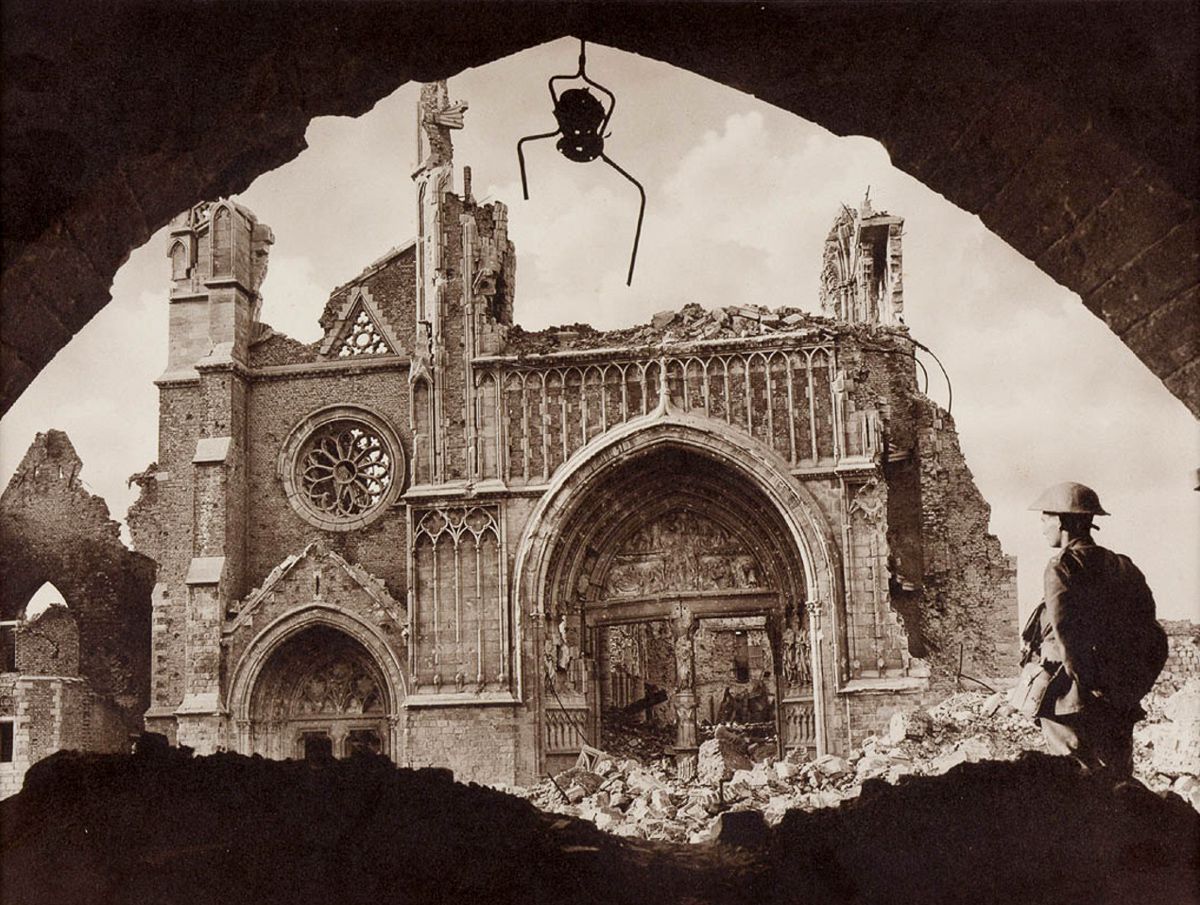
The ruined Cathedral, Ypres, viewed from the Cloth Hall

12th September Wednesday
Early start for Voormezelle to visit the 54th Battery Aust. Siege Artillery. The road to Voormezelle was in a state of great activity, with transports & men moving towards concentration centres. Great numbers of Australian troops are converging on the sector between Ypres & Voormezelle, & there are every evidences of a great “push” or blow being dealt against the Bosh very shortly.
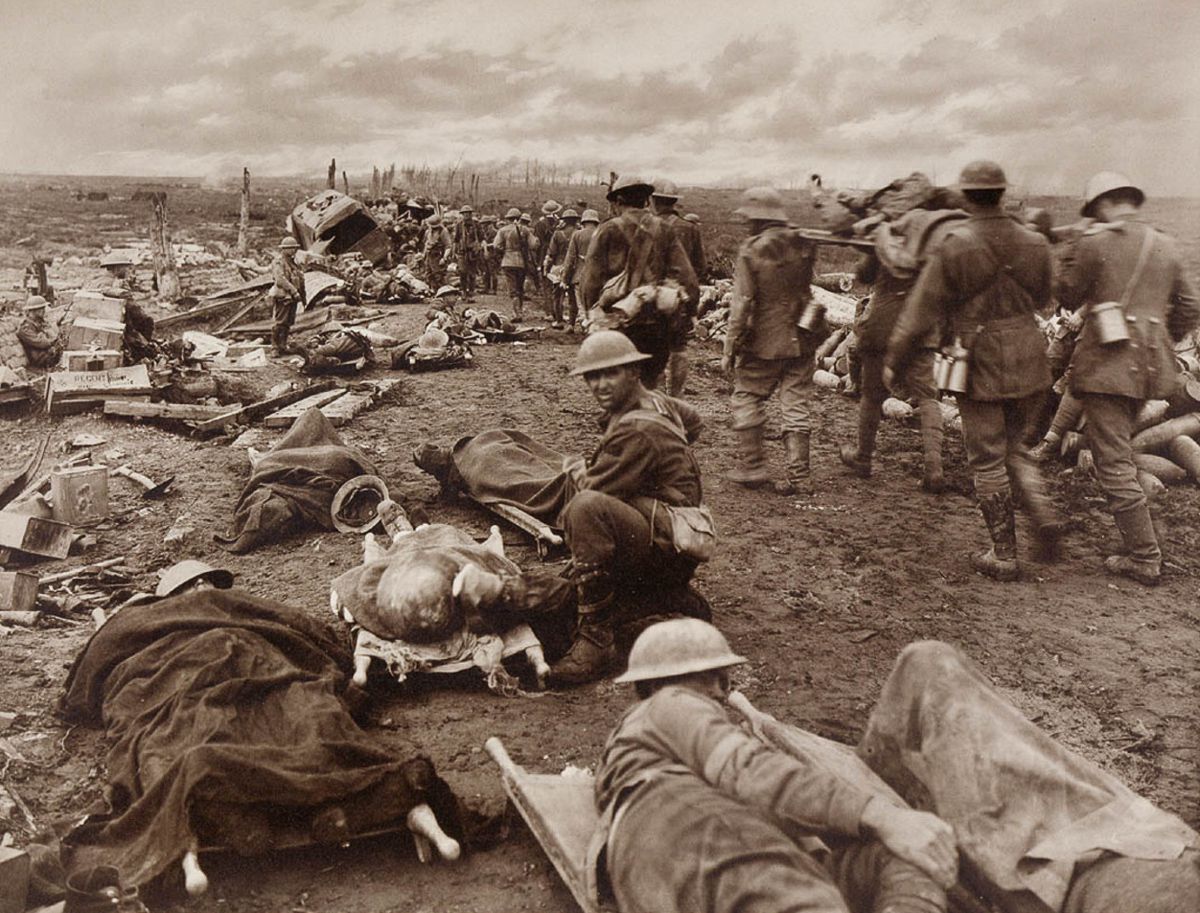
The Battle of the Menin Road in which the Australians took a prominent part
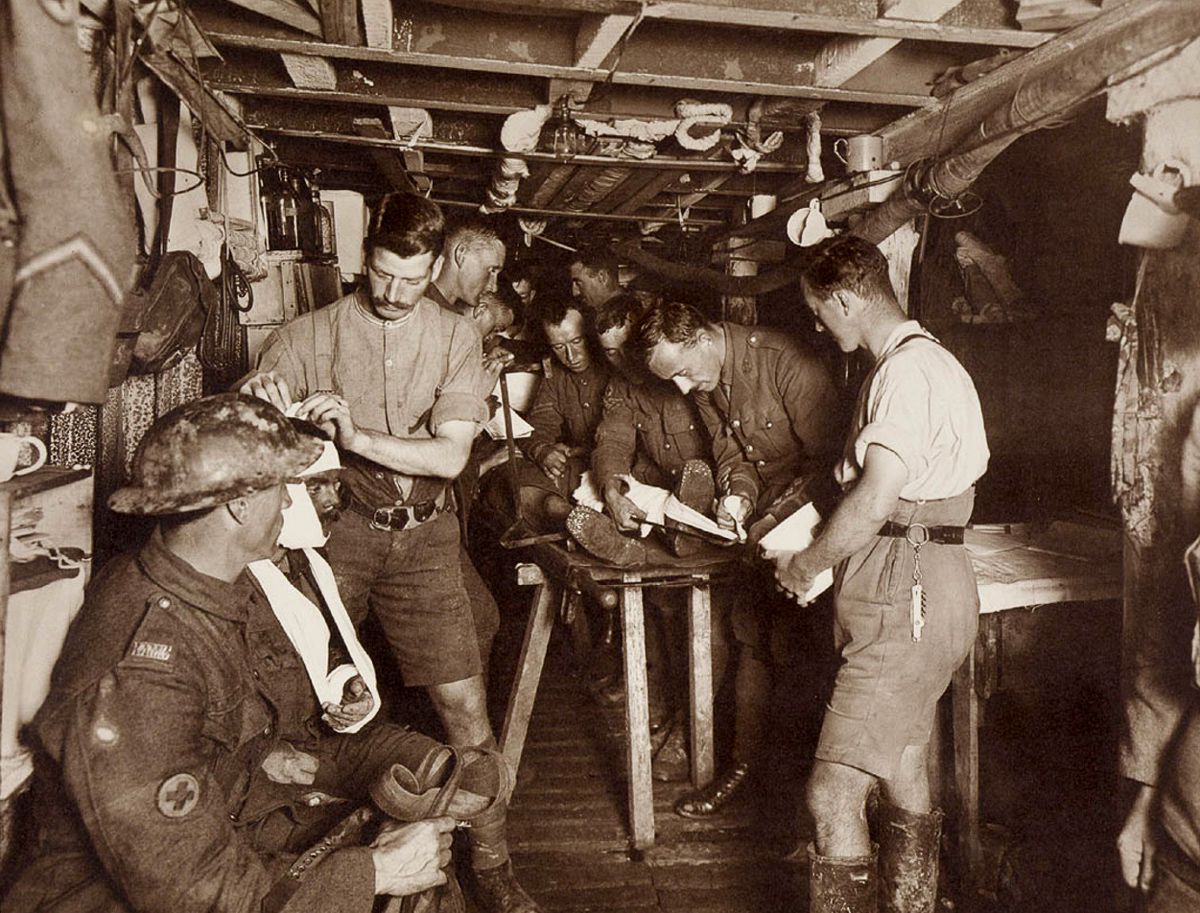
Attending to wounded in the advanced dressing station on Hill 60
13th Septr Thursday
The roads from Steenvorde right up to Dullbush are almost one continuous line of Australian troops, marching on to take over the front line, which they will do tomorrow. I followed them along in the car, photographing & cineing. Fiendish dust at times almost obscured the men, who laden with full equipment & sweat & dust begrimed marched on cheerfully as only Anzacs can. I received a great amount of banter from the troops & retaliated in equally cheerful way which the men approved of. Later I visited Major Williams of our 55th Battery & took a fine series of his great howitzers in action. [No 26, 27] The amount of ammunition & supplies being brought up are stupendous. The whole back area is covered with dumps and ammunition stacks.
Our resources are illimitable & there appears to be sufficient shells around to pave a way to Berlin. I wonder how many of these brave fellows will live to be photographed, or how many Bosh those shells, fired for my cinema pictures, will have been killed by them. The whole surroundings convey the impression of bustling & preparing & that a great battle is imminent within a very few days.
With our men in the front & unlimited artillery & resources in the rear, we should have little trouble in breaking through the enemy’s defensives. The Boch is perfectly aware of our great preparations for his planes come over very frequently to Spot out our doings.
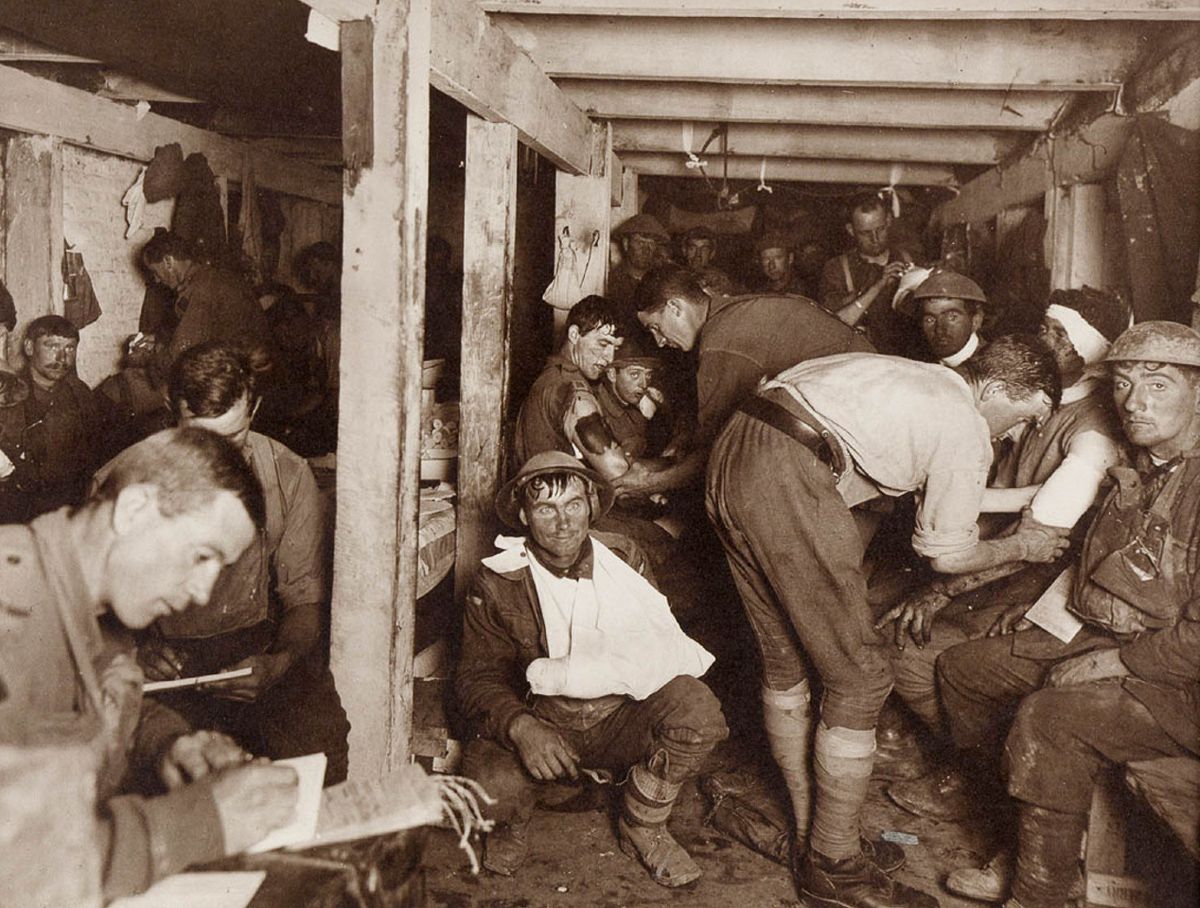
Scene in an advanced dressing station during a battle.


A few Huns captured by the Australians at Broodseinde
14th Septr /17
Morning Threatening rain which conditions improved during afternoon. I took a number of route & cinema films along the Poperinghe Ypres road of the endless streams of men going & coming. Unless one sees, it is impossible to convey a pen impression of the throngs of troops, baggage & transports which cram these roads. Forces are concentrating for the battle which inevitably must come off in a few days, that is, if, as is customary, we don’t delay operations until the rain sets in. We followed along the Ypres road, which is being metalled and corduroyed in places for the coming winter, & visited Ypres. Wilkins & I had a potter about the ruins & took a few pictures. We left the city by the Menin gate, or rather where it used to be, & I left Wilkins & proceeded on foot along the Menin road to our advanced batteries. This is a distance of about two miles – the liveliest two miles I have ever walked. It is along this way that all our supplies & ammunition must go to the Ypres front.

Derelict tanks knocked out of action by an enemy tank strafing gun

A windy outpost on Westhoek Ridge
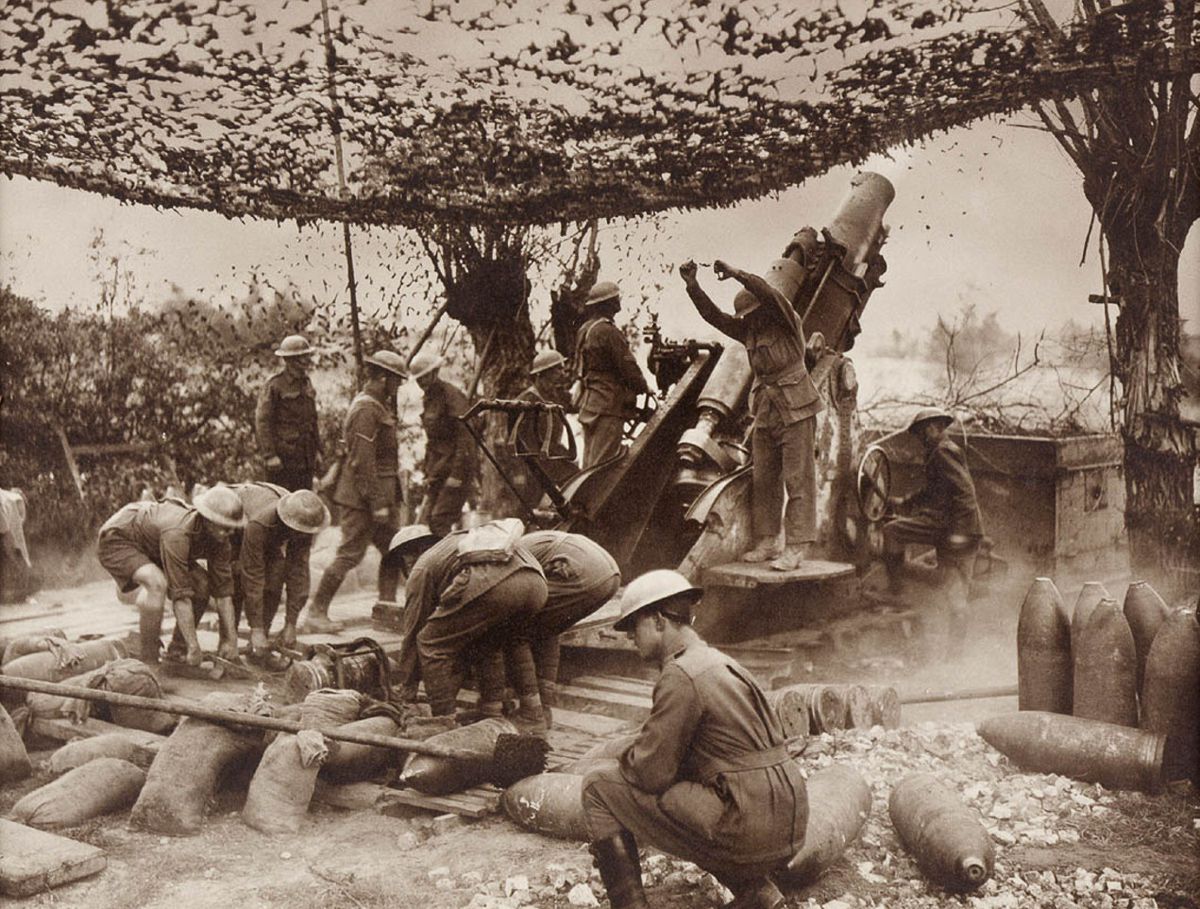
A Howitzer of the 55th Australian Siege Artillery in its lair
20th September Thursday
It has been a glorious & frightful day. The Battle is over & we have achieved our objectives. Fortune has favored us with weather which in a very great measure attributed to our success. All last night a heavy bombardment was maintained on the enemy’s lines; & from where we were at the Dressing Station we had a magnificent view of it. The whole country viewed from the 3rd story of an old ruin, was so alive with gun flashes, that I can only liken them to looking over the twinkling lights of a city, & during a violent thunderstorm. The flash of the heavies in our immediate vicinity lit the landscape up & moving masses of troops, with the fitful gleam of a continuous succession of lightning bursts. Naturally we got neither sleep nor rest amid this pandemonium & right glad we were to be amove at 4 am. A large number of casualties were coming in when we left, as the Boche artillery instead of duelling with our artillery opened up on our storming infantry. Those that came in & were not over seriously wounded, expressed their pleasure of having escaped the horror of another battle, and it is patent that all thoroughly loathe this frightful prolongation of massacre.
We were just walking along the Menin road in the twilight, near Hellfire Corner, when our barrage began. Simultaneously from a thousand guns, & promptly on the tick of five, there belched a blinding sheet of flame: & the roar – Nothing I have heard in this world or can in the next could possibly approach its equal. The firing was so continuous that it resembled the beating of an army of great drums. No sight could be more impressive than walking along this infamous shell swept road, to the chorus of the deep bass booming of the drum fire, & the screaming shriek of thousands of shells. It was great, stupendous & awesome.
…
The way was gruesome & awful beyond words. The ground had been recently heavily shelled by the Boche & the dead and wounded lay about everywhere. About here the ground had the appearance of having been ploughed by a great canal excavator, & then reploughed & turned over and over again. Last nights shower too made it a quagmire; & through this the wounded had to drag themselves, & those mortally wounded pass out their young lives.
The shells shrieked in an ecstasy overhead, & the deep boom of artillery sounded like a triumphant drum roll. Those murderous weapons the machine guns maintained their endless clatter, as if a million hands were encoring & applauding the brilliant victory of our countrymen. It was ineffably grand & terrible, & yet one felt subconsciously safe in spite of the shell burst & splinters & the ungodly wanton carnage going on around.
I saw a horrible sight take place within about 20 yards of me. 5 Boche prisoners were carrying one of our wounded in to the dressing station, when one of the enemy’s own shells struck the group. All were almost instantly killed, three being blown to atoms. Another shell killed four & I saw them die, frightfully mutilated in the deep slime of a shell crater…
The sooner this hellish barbarism is ended God be praised for few can see what real good can be gained.

Hauling up an 18 pounder across captured ground to an advanced position
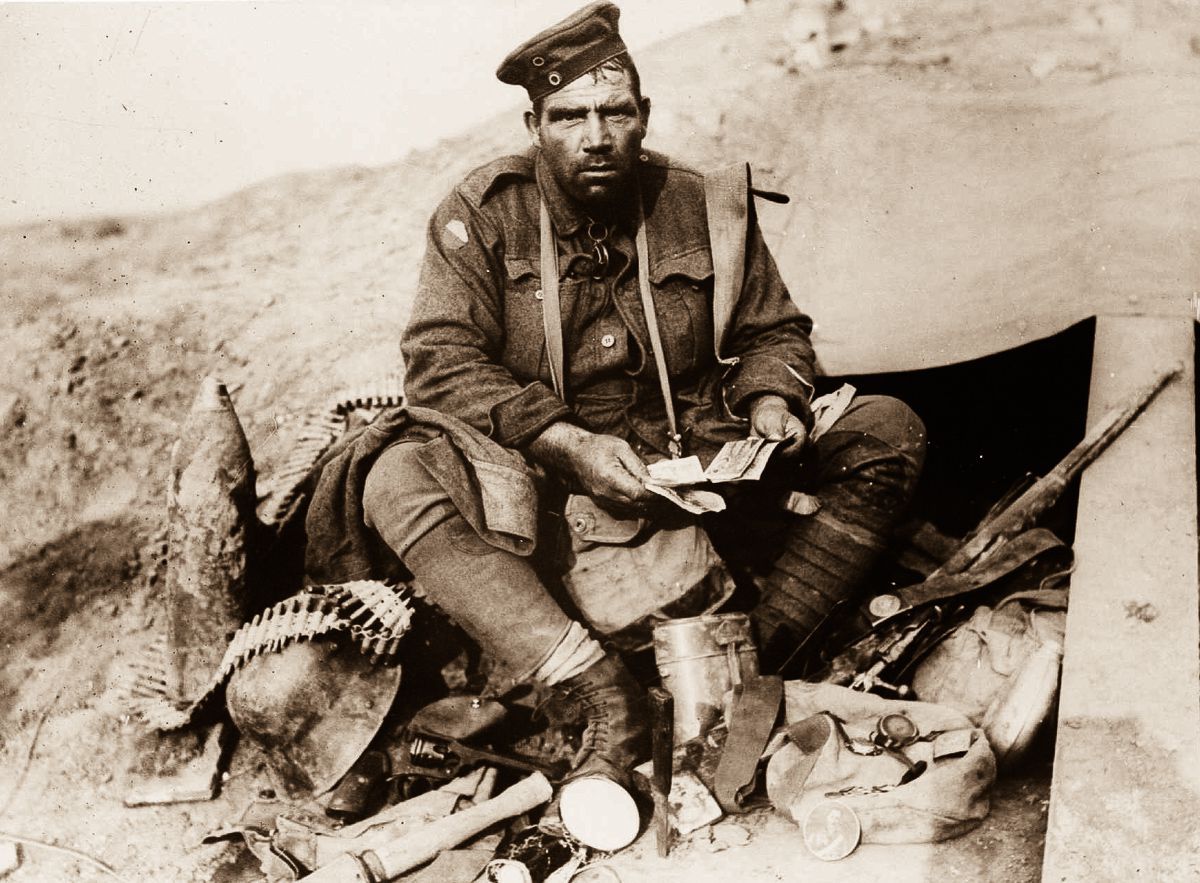
Wild Eye,’ The Souvenir King

27th September Thursday
Yesterday’s Battle has been a brilliant victory. Our troops supported by the Argyles on left & Tommies on our right flank drove back the enemy & advanced over a front of 6 miles, 1500 yards. Owing to the enemy directing great pressure on our right, the British troops did not link up the defensive line with the Anzacs. The position was one of intense tension for some time, until our fellows assisted by the English & Scots consolidated the weak position. The village of Zonnebeke is in our hands & also Cameron House [No 53] – both piles of splintered bricks. Our artillery is superb & accounts in a great measure for the brilliant successes of our troops. The Barrage is so terrific that it sweeps the ground like & with a rake of steel & combs out the greater number of the foe, whilst the remainder are so terrified with its terribleness that little fight is left in them. Still many gallantly hold out in the concrete pill boxes & other strong points, until our bayonets thrust through the loop holes or a mills bomb dropped down the ventilator announce that we have arrived.
The Australians are superb. They take everything cheerfully & collectedly & altogether are a magnificent set of troops. Nothing can or will stand up to them. They are a little too eager perhaps, as they are inclined to go beyond objectives & so sustain unnecessary casualties.

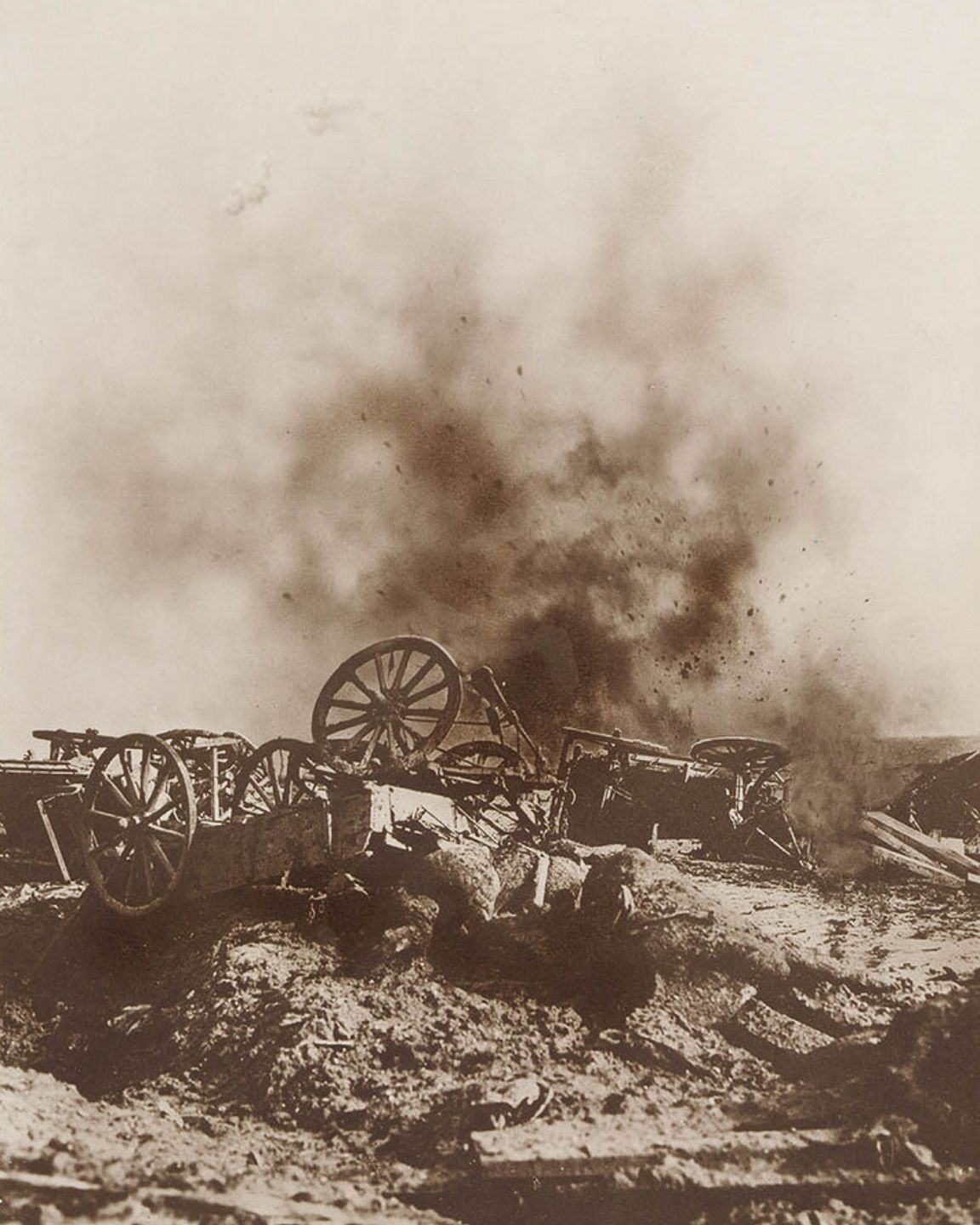
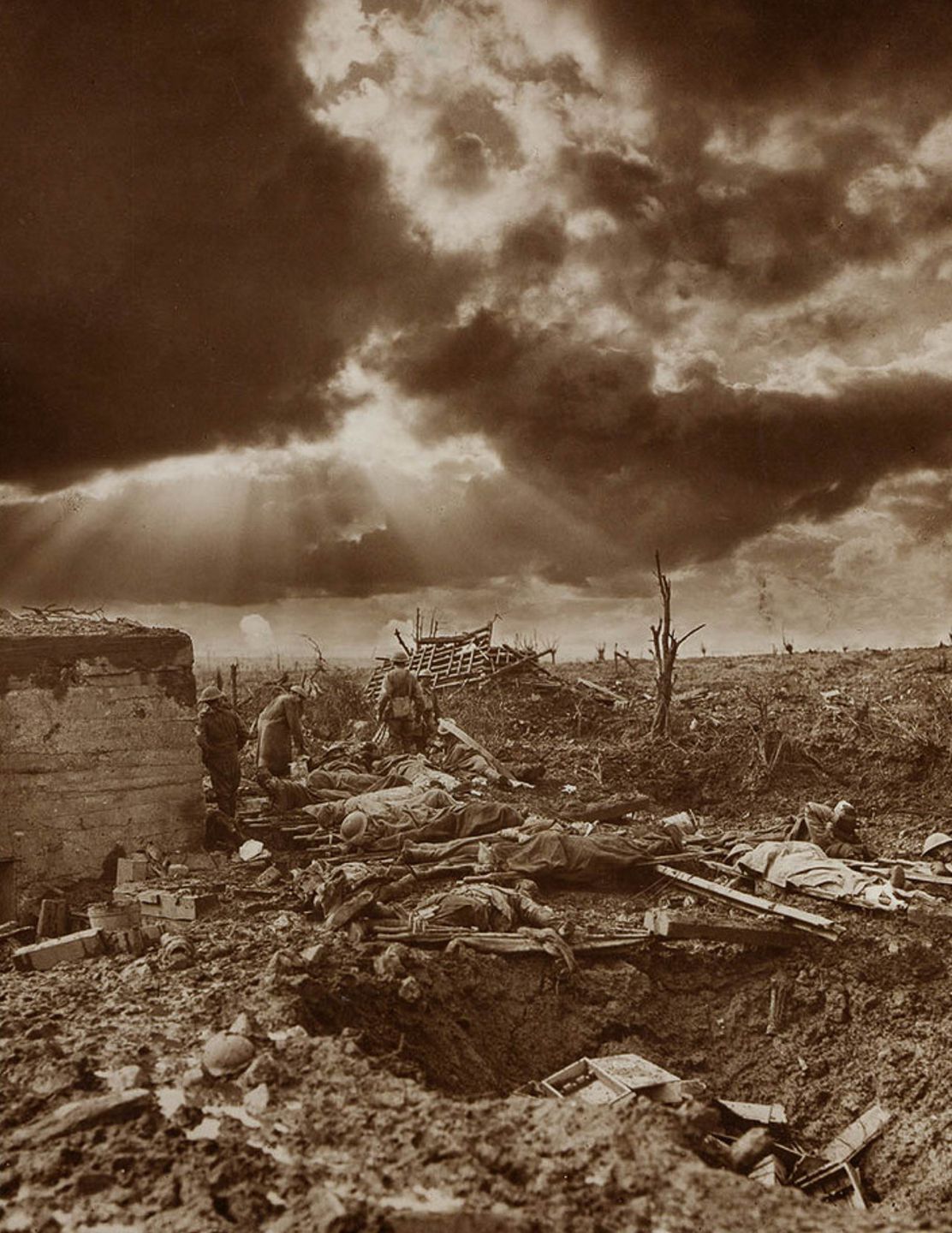
24th Octr.
One of the most pitiful & heroic sights is to see the ammunition pack horses bringing up shells & charges. Their drivers leading & often going up to the thigh in slimy mud. The horses stumble through, sometimes falling into shell craters, from which they have to be hauled. Oh it is a wicked agonising sight. Here & there lay dead half buried in mud, horses & broken waggons all cogently telling some tragedy & horror: but one is immune to all these, & passes by as unperturbed, as though they were just pieces of rock.

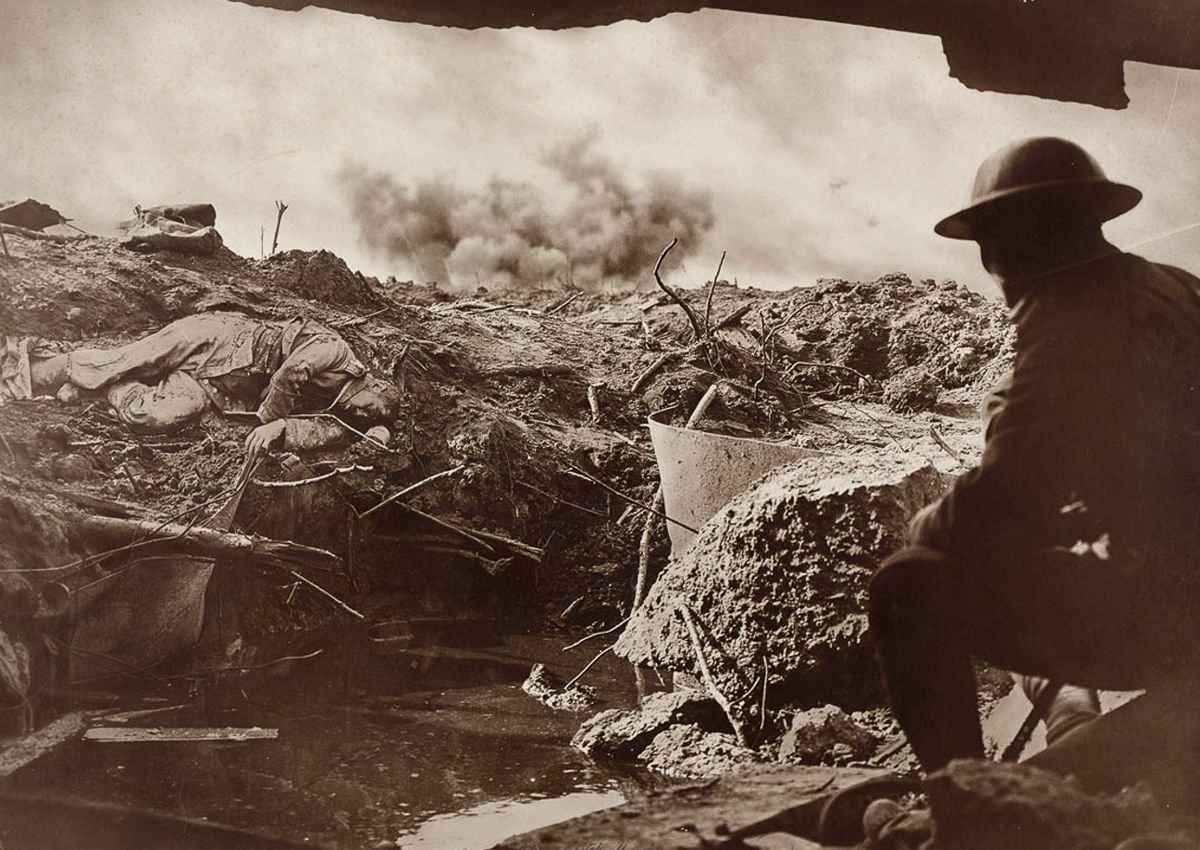
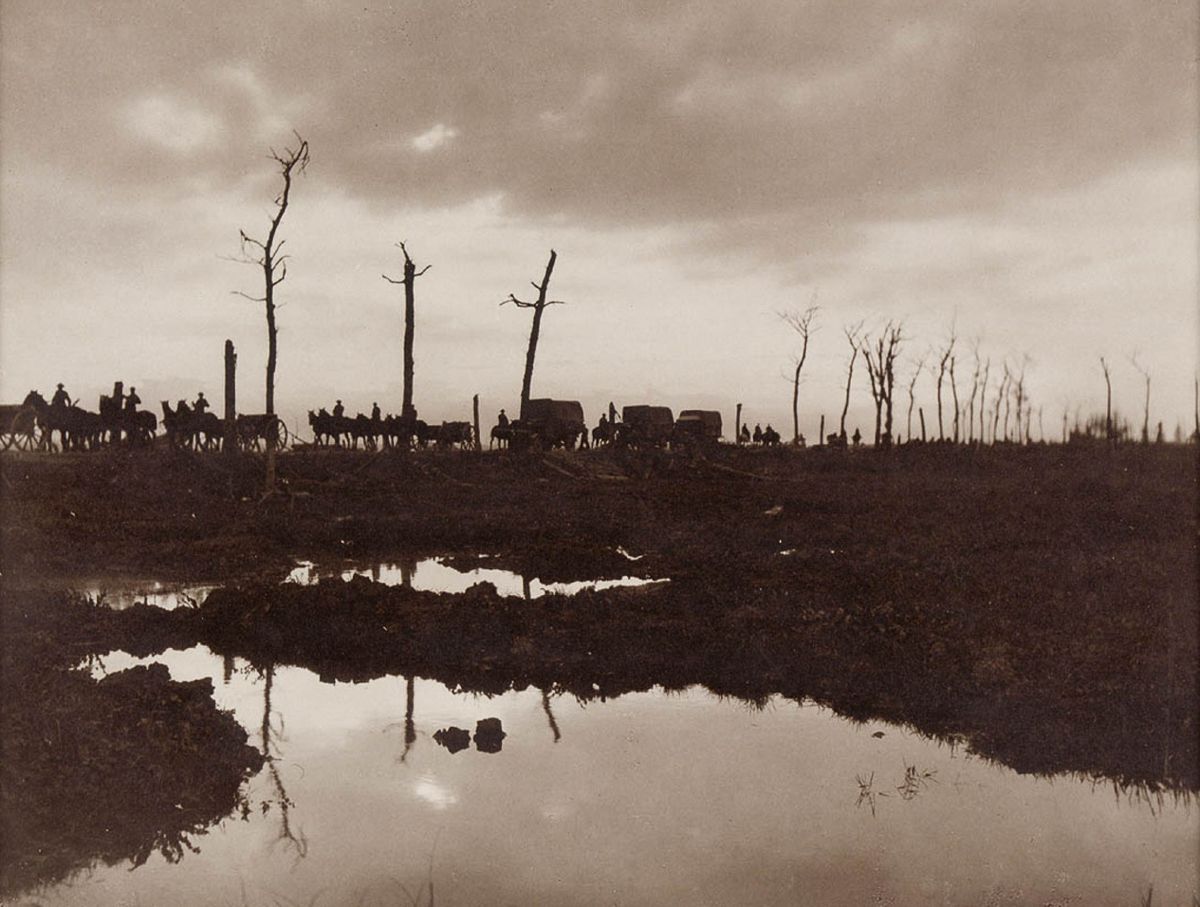
via; NSW Gov.
Would you like to support Flashbak?
Please consider making a donation to our site. We don't want to rely on ads to bring you the best of visual culture. You can also support us by signing up to our Mailing List. And you can also follow us on Facebook, Instagram and Twitter. For great art and culture delivered to your door, visit our shop.

